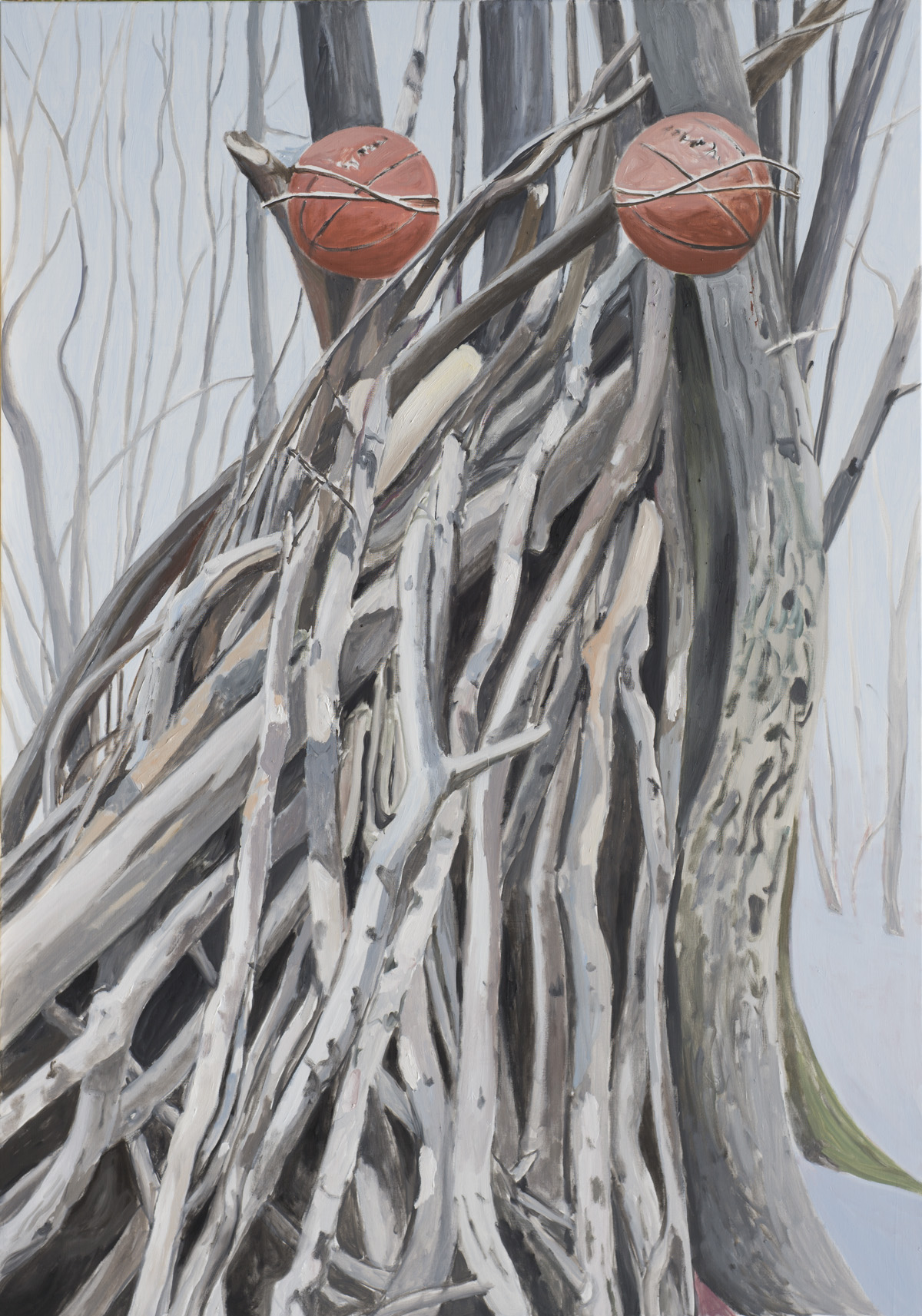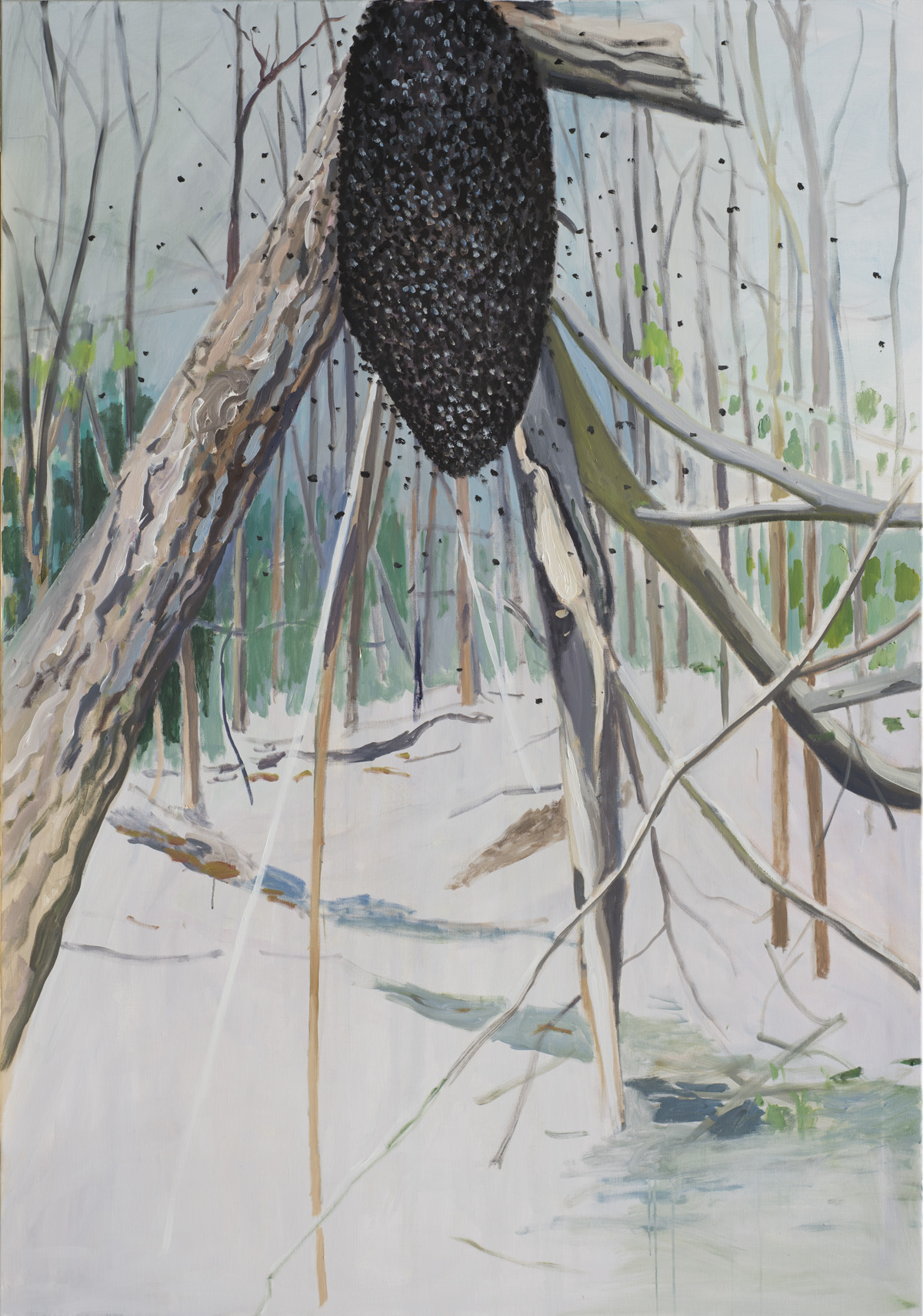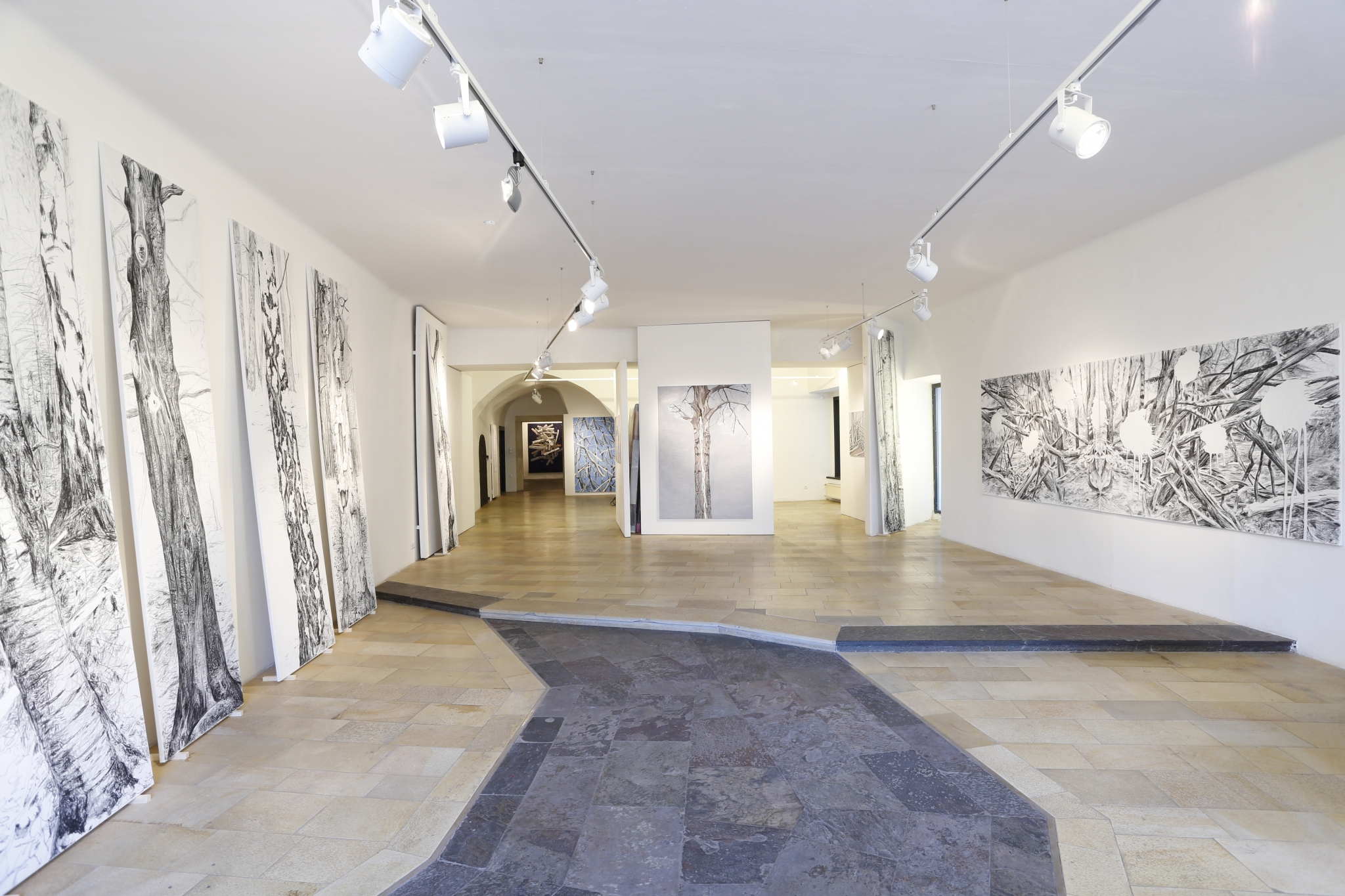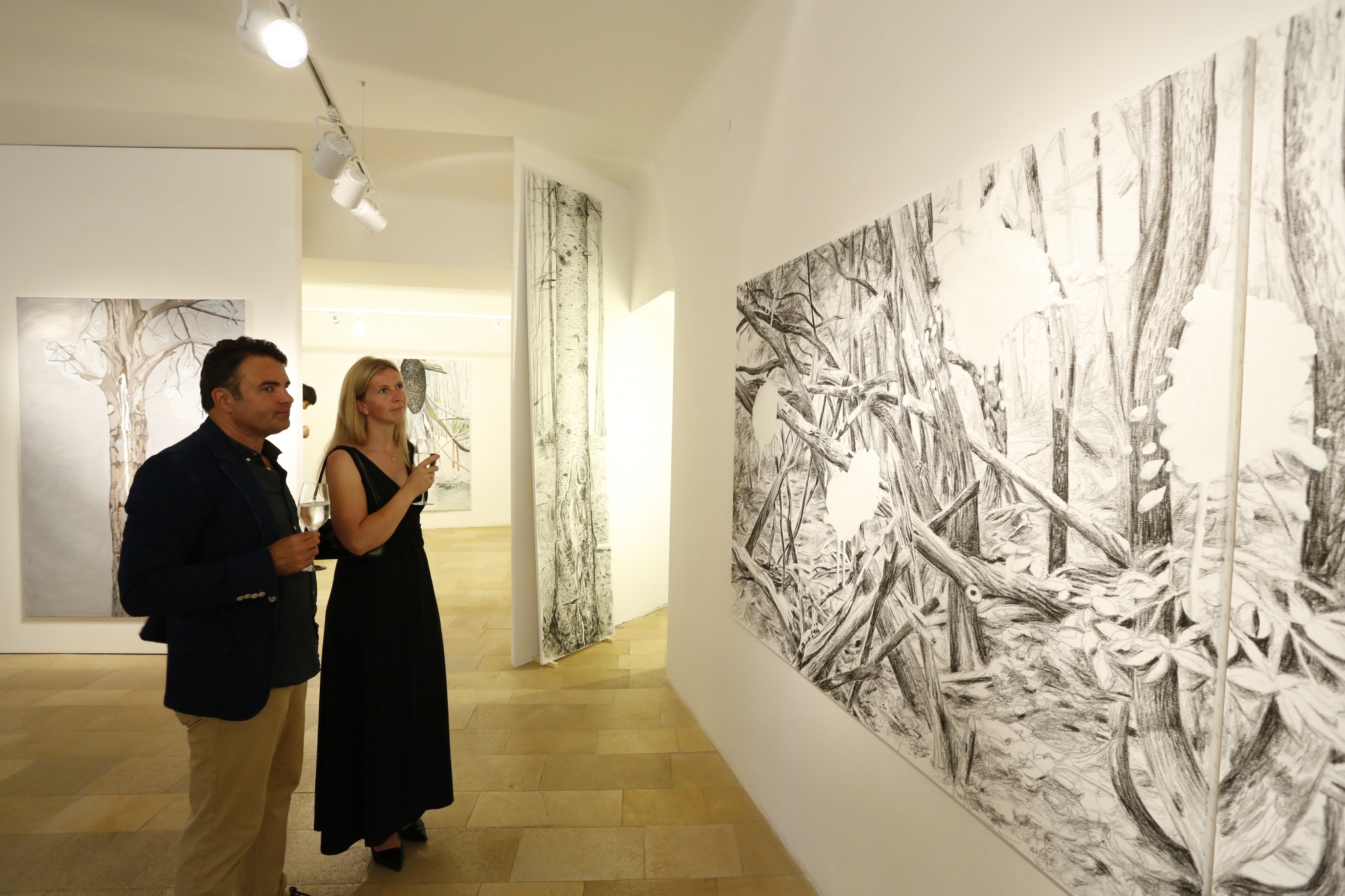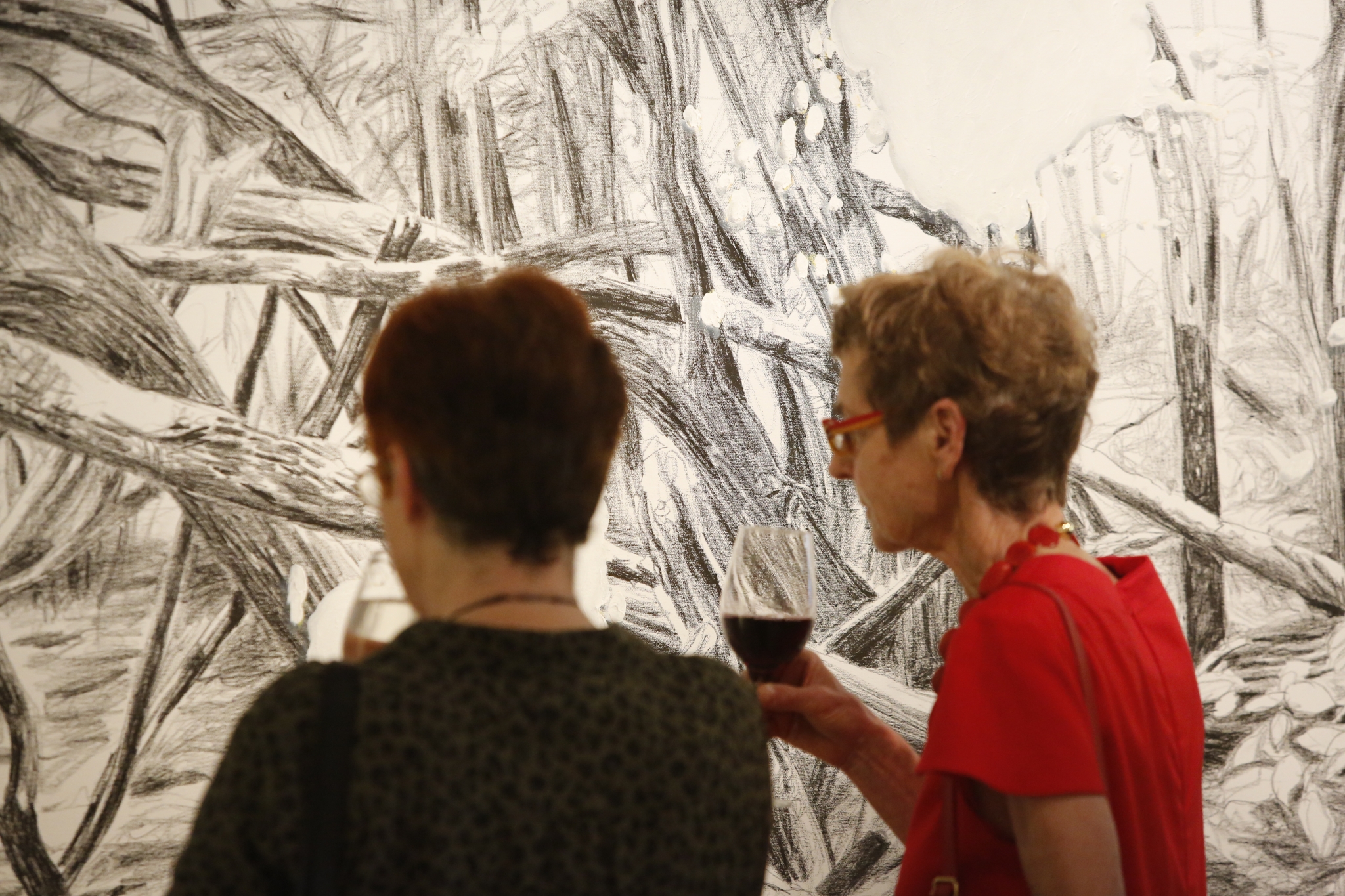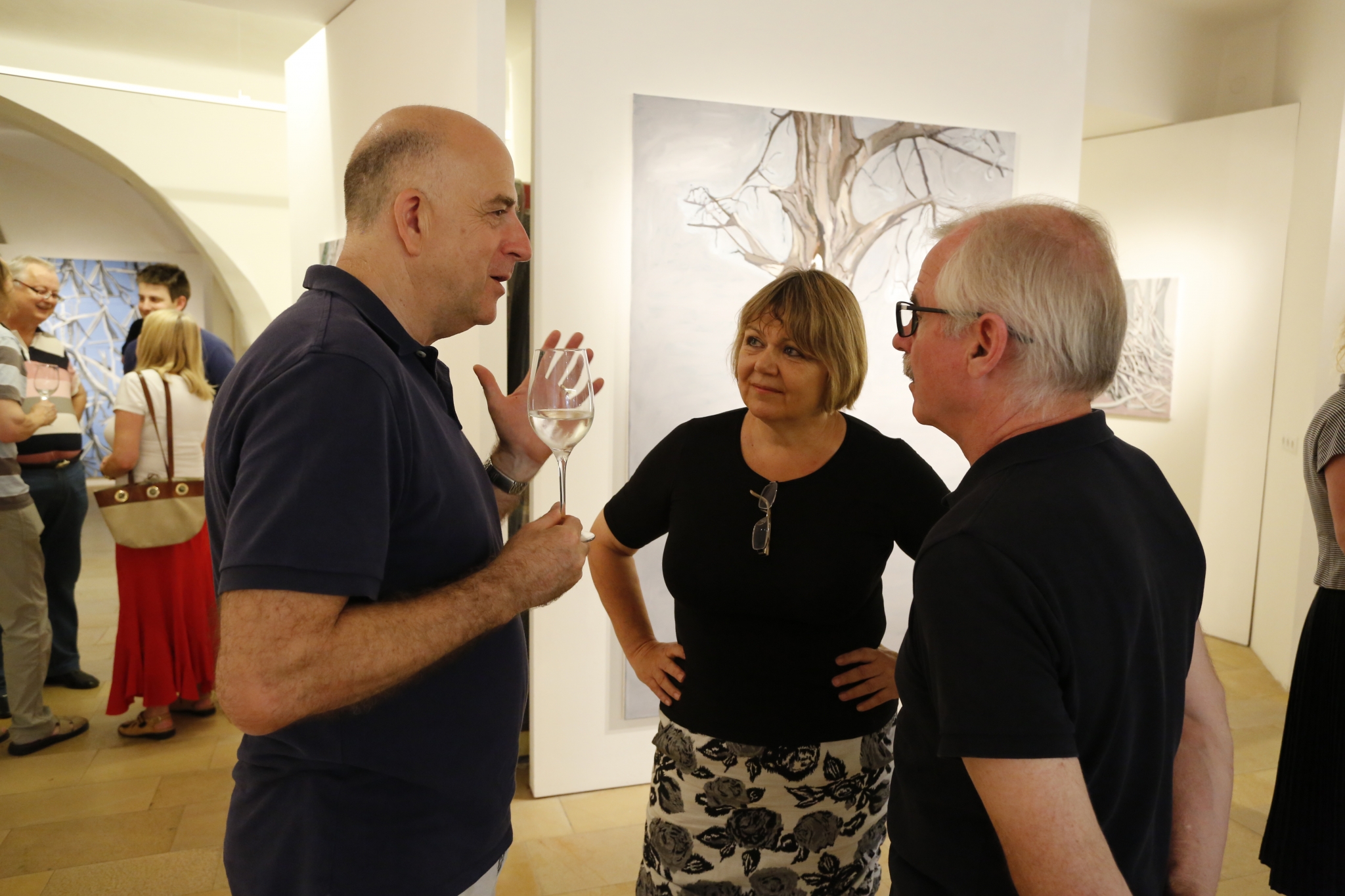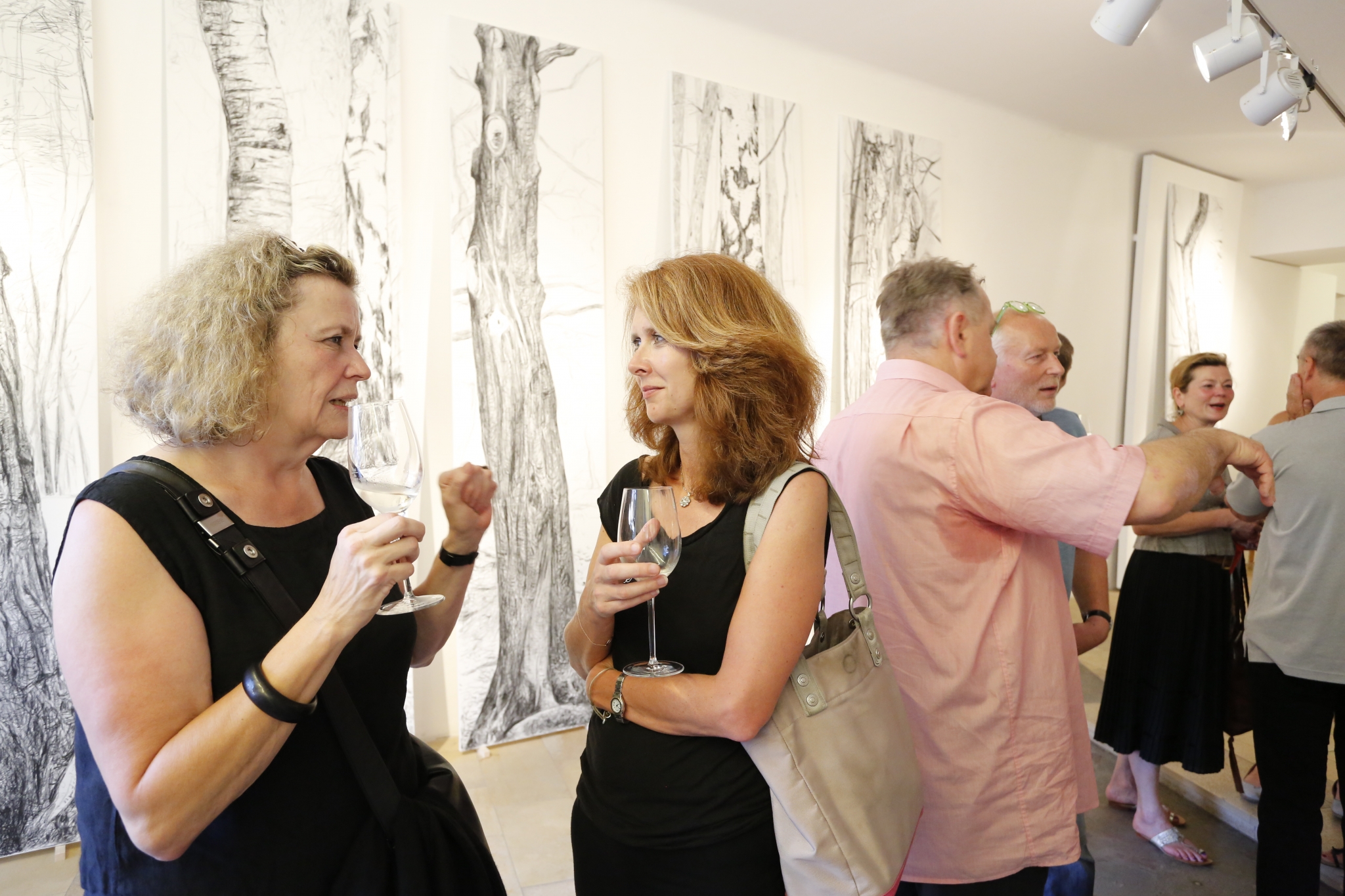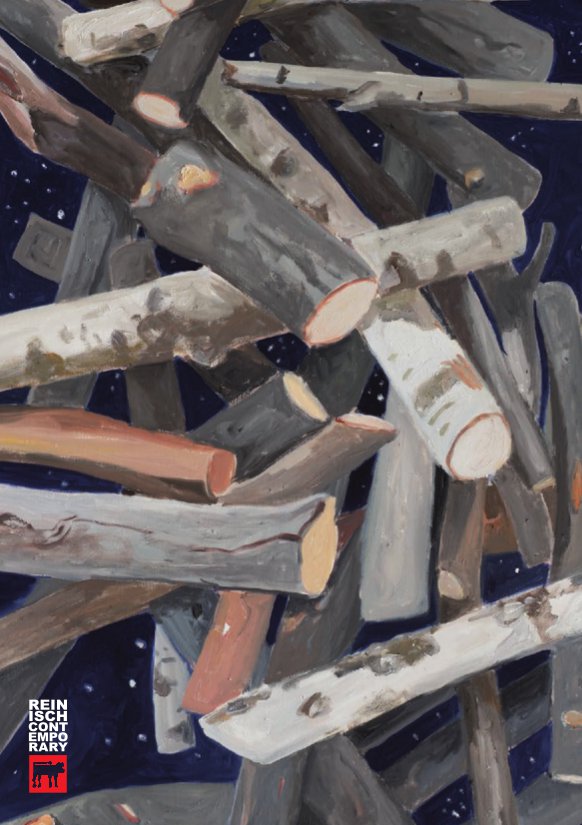17. June-20. July 2013
Humans began to tame their surrounding nature early on. The driving-in of the first wooden stake into the earth and with the stacking up of the first stones created conditioned nature – the habitat of humankind. At first, this finishing of wilderness was determined by function, until the world became an increasingly artificial stage of human action. Since then, we have turned into role players, prepared to follow varying imaginings of nature and environment. The world has not become an image, but a performance platform or, rather, a highly technology-dominated and complex room for life and maneuver. Even the yearned-for untouched is, as it were, a conditioned untouched, which follows a basic notion of authenticity – mediated authenticity.
Alois Mosbacher, as a painter who approaches these basic processes and realises them in his art, shows the traces creatures leave behind in the environment. Almost imperceptibly, this gives rise to spaces, which are removed from reality, and images, which speak of human interventionism in relation to nature. Mosbacher’s art was never bound by the formal problems of painting as an art genre. Just as much as his work as an artist never took up the missionary role of denouncing aberrations of human behaviour.
It is the formal quality of ‘man the creator’ (homo faber), which Mosbacher addresses in his paintings. In simple huts and sheds, mostly located in forests, humans encounter the ‘labouring animal’ (animal laborans) – labour and creation as a form of survival. Mosbacher pursues such signs of practical intelligence in nature in order to capture them as sculptural elements and as evidence of purposeful activity. Beehives and wood stacks, branches and tree trunks emerge as defining visual elements, which cannot be constrained to the image area, but underline the installation-like character of Mosbacher’s paintings.
In this exhibition, Reinisch Contemporary shows Mosbacher’s latest works, which doubtlessly represent one of the most exciting recent developments in Austrian painting. In his new works, the artist further matures and condenses his vocabulary, and even makes self-referencing allusions to his own artistic development. In his graphics-dominated painting, motives and themes from the past resurface, as it were, as evolutionary advancements.
Günther Holler-Schuster
